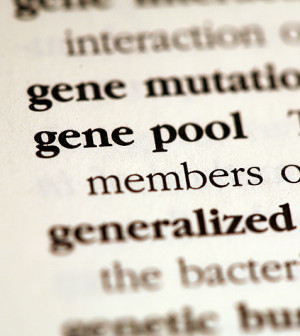- Navigating Your Midlife Crisis: Embracing New Possibilities
- City Raccoons Showing Signs of Domestication
- Mapping the Exposome: Science Broadens Focus to Environmental Disease Triggers
- One Week Less on Social Media Linked to Better Mental Health
- Your Brain Changes in Stages as You Age, Study Finds
- Some Suicide Victims Show No Typical Warning Signs, Study Finds
- ByHeart Formula Faces Lawsuits After Babies Sickened With Botulism
- Switch to Vegan Diet Could Cut Your Greenhouse Gas Emissions in Half
- Regular Bedtime Does Wonders for Blood Pressure
- Dining Alone Could Mean Worse Nutrition for Seniors
Cracking the da Vinci DNA Code

It is called the “Leonardo Project,” and its primary aim is to reconstruct the genetic makeup of one of the greatest minds in history.
The effort, which will use cutting-edge technology to decipher centuries-old bits of DNA, may uncover what genes fueled Italian master Leonardo da Vinci’s extraordinary level of creativity.
A team of anthropologists, genealogists, microbiologists and art historians began their work this month in the Italian city of Florence.
The Renaissance star painted both the “Mona Lisa” and the “The Last Supper,” even as he invented prototype designs for wildly futuristic technologies such as the helicopter and the armored tank.
But the exact combination of inherited qualities and circumstances that might drive such creativity, skill and accomplishment remain a mystery.
The problem: Most of this information has been lost since da Vinci died in 1519, at the age of 67. Even the exact location of his grave has long been in doubt.
But, if granted the necessary approvals, the scientists will compare DNA from da Vinci’s relatives, past and present, with bits of remains from the master himself.
“We stand to gain not only greater historical knowledge of Leonardo but possibly a reconstruction of his genetic profile, which could provide insights into other individuals with remarkable qualities,” said Brunetto Chiarelli, of the International Institute for Humankind Studies in Florence.
The multipronged project has already tracked down a group of Italian residents of Florence, Vinci and Milan who are likely relatives of Leonardo. DNA collected from such individuals could then be compared with DNA extracted from remnants of hair, bones, skin cells and fingerprints believed to be associated with da Vinci.
Some of that da Vinci-related DNA ultimately may be retrieved using technology that could extract genetic information from the 500-year-old paintings and notes that the artist handled. Even the ancient dust layered on top of such objects is a potential source of genetic interest, the research team noted.
The project’s objectives, methods and work to date were published recently in a special issue of the journal Human Evolution. Chiarelli is editor of the journal.
Part of that work to date includes a high-tech investigation of da Vinci’s father’s tomb in Florence.
“I think everyone in the group believes that Leonardo, who devoted himself to advancing art and science, who delighted in puzzles, and whose diverse talents and insights continue to enrich society five centuries after his passing, would welcome the initiative of this team,” said Jesse Ausubel in a journal news release. He is vice chairman of the Richard Lounsbery Foundation, which is sponsoring the project. “Indeed [da Vinci] would likely wish to lead it were he alive today.”
More information
Here’s more on The Leonardo Project.
Source: HealthDay
Copyright © 2025 HealthDay. All rights reserved.










